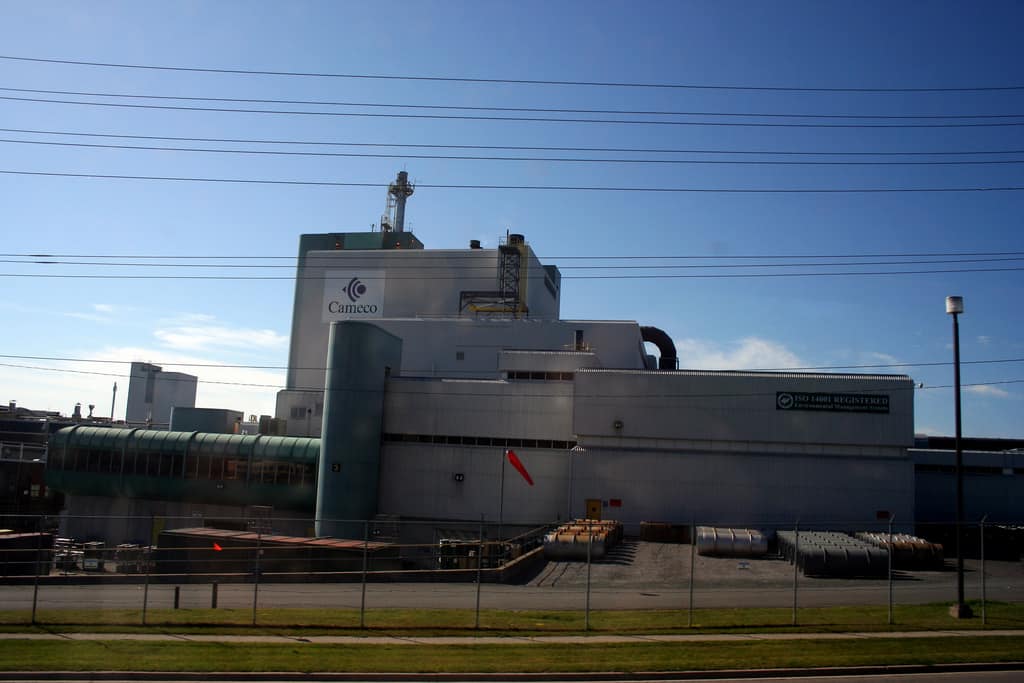Cameco Corp. (TSX:CCO)(NYSE:CCJ) is one of the largest uranium miners in the world, but the company’s commanding position in the market is often overshadowed by the long-standing weakness plaguing the uranium market as a whole.
Uranium is used primarily for fuel in nuclear power plants. Back in 2011, uranium prices were hovering near US$70 per pound, and demand for nuclear power was strong. But when a tsunami caused by an earthquake damaged the Fukushima reactor in Japan, demand for uranium and, by extension, nuclear power plants came to a sudden halt, creating a surplus of uranium, and leaving Cameco holding a growing inventory of a product that nobody wanted.
Uranium prices have since dropped to US$20 per pound, which has decimated the market. Cameco and other uranium miners have been forced to cut costs and streamline operations to only the most cost-efficient of facilities until the market improves.
Is the uranium market really improving?
Pundits have been calling for renewed interest in uranium for several years, and much of that is coming from the rapid development underway in emerging economies.
India and China have aggressive growth targets and are undergoing massive infrastructure booms, which have massive power demands.
India has targeted a staggering 14.6 GW of capacity to stem from nuclear power sources by 2024, and that capacity target rises to 63 GW by 2032. Looking further out, India has set 2050 as the year when a quarter of all electricity in the country will be generated from nuclear power.
China already generates 32.4 GW of power from nuclear power plants, but within the next three years, that figure is set to hit 58 GW. Looking longer term, China plans to have a nuclear-powered capacity of 150 GW by 2030.
In total, there are over 50 new reactors under construction around the world, and at least that many in various stages of planning and approval.
Where does Cameco’s revenue come from?
Investors contemplating an investment in Cameco are often left wondering how the company has been able to survive and continue to pay out a respectable dividend with a yield of 3.2% over the past few years while uranium prices have continued to drop.
Apart from Cameco’s mining operations, which comprised over two-thirds of the company’s revenues in the past fiscal year, Cameco operates two other segments: a fuel services business as well as a middleman buyer/seller operation called NUKEM.
Despite the obvious reliance of these segments on the still-depressed price of uranium, Cameco has other things that make it a compelling investment opportunity.
First is the company’s dominant position in the market, which has allowed it to reach sufficient economies of scale through cost cutting and shuttering more expensive and less productive facilities, at least until such time that the market recovers.
Another factor is the nature of Cameco’s business. The uranium that Cameco mines is used as the fuel for nuclear power plants, sold through what are typically long-term contracts. Those contracts have shielded Cameco from the full effect of the drop in uranium prices, as they carry much higher and locked-in uranium prices.
Is Cameco a good investment?
Cameco is an intriguing opportunity for investors, particularly over the long term.
On one hand, the uranium market is set to grow thanks to the infrastructure developments underway that will clear up the supply glut and drive prices higher.
Looking beyond the demand from emerging economies, the developed world is set to steadily replace or upgrade existing nuclear facilities over the next decade to meet their growing power demands. This often overlooked but could provide additional revenue for Cameco.
On the other hand, the prolonged weakness in uranium prices, coupled with the fact that many of Cameco’s long-term contracts are coming due within the next few years, puts Cameco in a time-sensitive position, which may ultimately be too risky for most investors.
In my opinion, investors that can tolerate short-term risk would do well with a small position in Cameco and benefit from the 3.2% yield dividend while waiting out the recovery of uranium prices.







